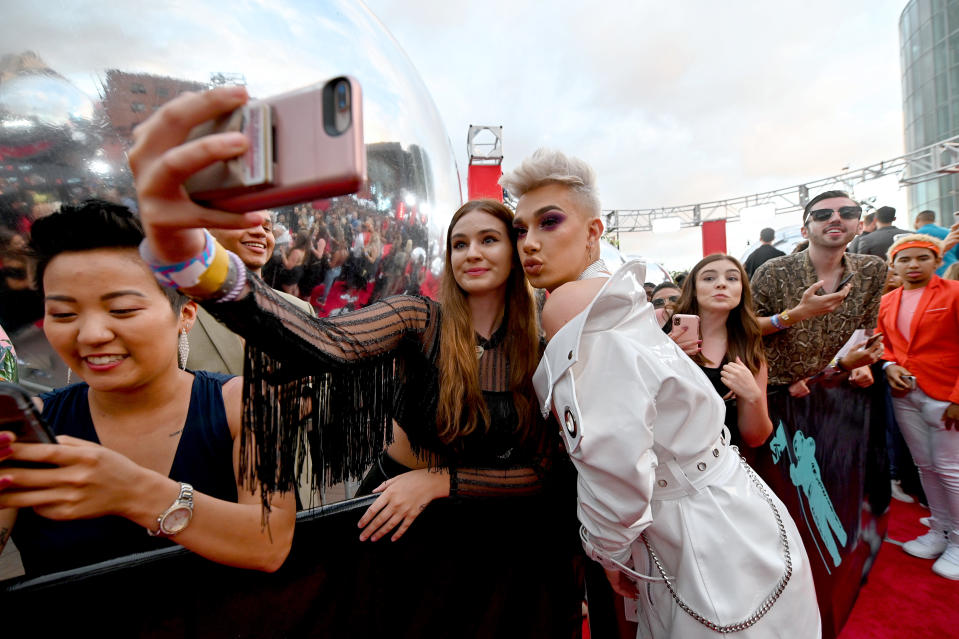Why influencers can no longer escape not putting #ad in posts

Being an influencer is one of the most lucrative jobs in the world.
It isn’t just everyday people becoming celebrities by showcasing their passions, for anything from gaming to fashion — it’s now all about turning a highly-engaged, often enormous number of followers into a multi-million dollar business.
But advertising watchdogs are now finally catching up on how to regulate and hold to account the influencer sponsored ad industry.
“The research tells us that all of us can find it hard to identify when an influencer is advertising, so it’s crucial that ads are labelled clearly,” said Guy Parker , CEO of the Advertising Standards Authority (ASA) in a statement today.
“Our message to influencers and brands couldn’t be clearer: be upfront with followers, for example by using #ad.”
According to analytics firm Instascreener, marketing spend for influencer advertising has consistently risen over the last few years, reaching nearly $500m (£409m) in the second quarter this year. Influencer marketing agency Mediakix values Instagram’s influencer market at $1bn alone.

One of the numerous ‘K’s’ in the ‘Keeping Up with the Kardashians’ dynasty, Kylie Jenner, has become a billionaire through her following on social media. Her 145 million followers on Instagram means she can command around $1m to flog anything, and it also means she can sell out products from her own make-up business in 30 seconds.
The influencer market is such a huge deal that an argument over one of the beauty industry’s most famous characters — James Charles — marketing a rival haircare vitamin caused a massive media storm, leading to a falling out between him and internet royalty Tati Westbrook, and consequently a big impact on followers and the earning power of both.

Over the last 18 months, the ASA conducted a “comprehensive review including research with the public and a broad look at existing academic literature in this area,” when it came to influencer advertising.
It found that “people struggle to identify when social media posts by influencers are ads and confirms that the ASA’s current approach of requiring influencers to use a prominent reference, such as #ad, is necessary as a minimum.”
“The ASA’s findings dispel any argument that labels aren’t needed and re-emphasise the importance of influencers being upfront and clear with their followers about when they are advertising,” it added.
The ASA say the recommended measures are to ensure consumers are not misled.
“Labelling a post clearly as an ad allows people to know when they’re being sold to, enabling them to make an informed judgment about the commercial intent behind it,” said the ASA, reiterating that the other regulator, the Competition and Markets Authority (CMA), are aligned in recommending upfront advertising disclosures.
“A finding consistent across the ASA’s research was that for an influencer post to be obviously identifiable, a label must first be noticed and then understood. Crucially, a visible and well understood disclosure, such as #ad, increased the likelihood of participants in the ASA’s research identifying influencer adverts as ‘definitely an ad’.”

With powerful regulators like the ASA and CMA being involved and conducting such large scale reviews and training propositions for influencers, it means that in the future there will be a clearer framework around what is considered misleading content for a consumer.
Influencers have already seen the authorities move against more disguised adverts, for example, such as someone publishing an Instagram post about how much they love a product, but without any mention or indication that they are being paid for the endorsement, or that they were given an item for free.
The CMA said earlier this year that influencers failing to comply with transparency rules over endorsements in this way could lead to legal action, resulting in heavy fines or even prison sentences.
The ASA said it will “now consider carefully the outcomes of this work. It will follow-up on the themes and issues brought to light by its research and target those parties involved in influencer advertising to make sure they’re following the rules.”
It is teaming up with the CMA to “further explain when a post counts as an ad and how and when they should be labelled.”
But this issue isn’t isolated to the UK — regulators around the world are clamping down. And, on top of that, the ASA will also “share the findings of this new, original research with other regulators, both domestically and internationally, to facilitate ongoing discussions about how best to make sure ads are obviously identifiable as ads.”

 Yahoo Finance
Yahoo Finance 
